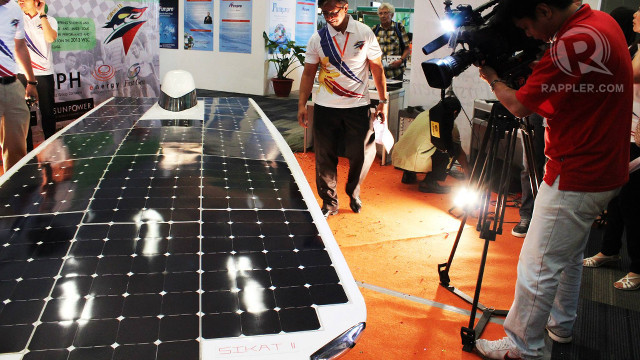SUMMARY
This is AI generated summarization, which may have errors. For context, always refer to the full article.

SYDNEY, Australia – An epic 3,000-kilometer (1,860-mile) solar car race across outback Australia kicked off in Darwin on Sunday, October 6, with Japan’s Tokai University hoping to bag a third back-to-back title in the 38-team dash.
The World Solar Challenge, last held in 2011, began with a high-tech, futuristic flurry from State Square, led out by Team Eindhoven from the Netherlands in their four-seater car Stella, one of eight competitors in the new Cruiser class which aims to showcase solar technology for mainstream vehicles.
But the main action is in the streamlined Challenger class, where defending champions Team Tokai are hoping for a third straight win after consecutive titles in 2009 and 2011.
Race organizers said the Japanese team were “quietly confident” despite starting in 20th position after clocking one of the slower laps at Saturday’s time trial, which was won by Australia’s Team Arrow from Queensland University of Technology.
READ: Latest PH-made solar car to race in Australia
“They are happy with the aerodynamic performance of their solar car,” the race crew said of Team Tokai.
The 2011 event was hit by drama as flames from wildfires raging through central Australia forced a halt to the race until they cleared, and a battery explosion caused the Philippine team’s car to ignite.
“We wish all participants a safe journey as they take on 3,000 kilometers of Australian outback, chasing the sun all the way to Adelaide,” said race director Chris Selwood.
Tokai is one of several Japanese challengers in the 2013 edition, with teams from 20 countries in Europe, Asia and North America fielding cars including the Netherlands’ Nuon Solar, near-winners in 2011.
Teams are allowed to store a small amount of energy but the majority of their power has to come from the sun and their vehicle’s kinetic forces, with the punishing desert race from Darwin to southern Adelaide which first ran in 1987 scheduled to finish on Thursday, October 10.
Crews are allowed to drive between 8 am and 5 pm each day and simply set up camp wherever their car pulls off the road at the end of the day. The first car to cross the line in Adelaide is the winner.
There are seven checkpoints along the route where drivers can get updates on their standings, the weather, and do basic maintenance – clearing any debris from the car and adjusting tyre pressure. – Rappler.com
Add a comment
How does this make you feel?
There are no comments yet. Add your comment to start the conversation.